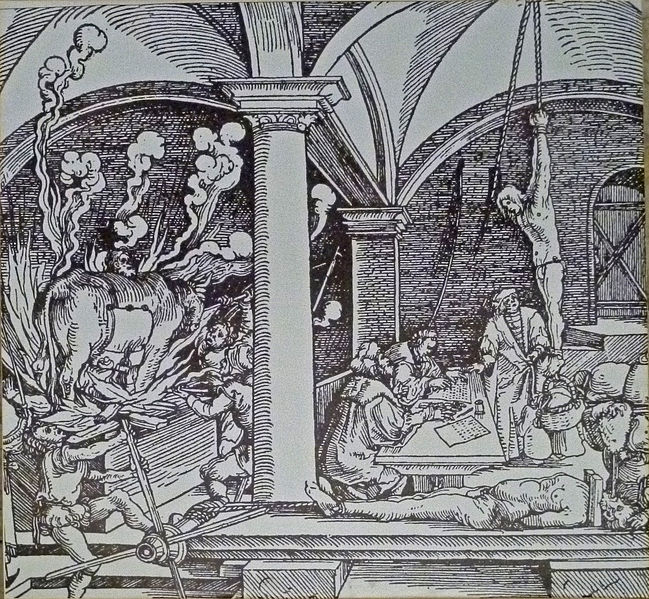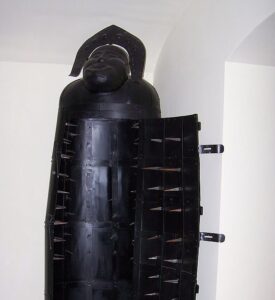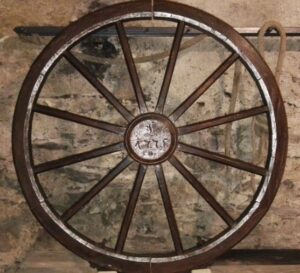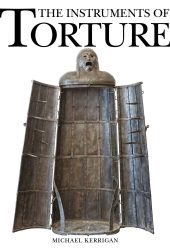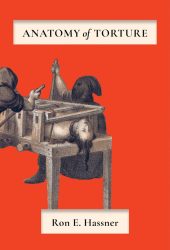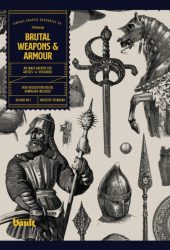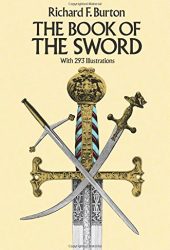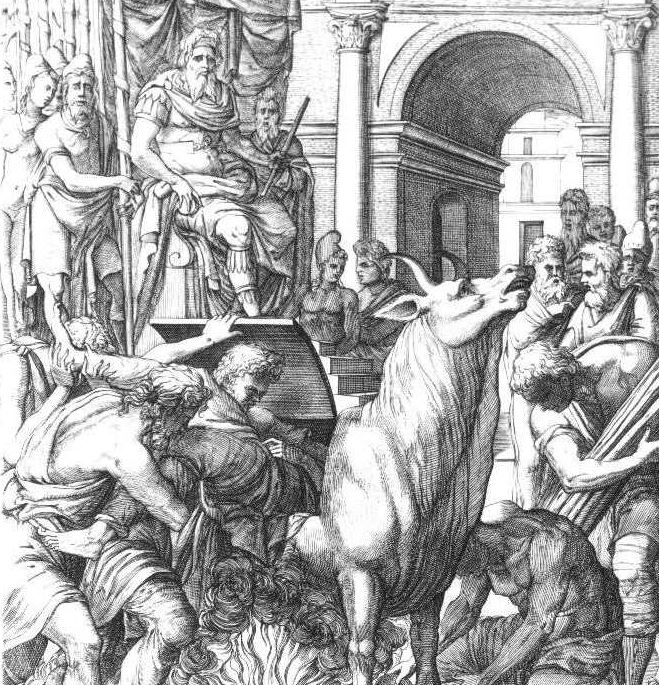
The Brazen Bull, also known as the Sicilian Bull, was a torture device used in ancient Greece, though it’s often associated with medieval times due to its notorious reputation.
It was designed in the form of a hollow bronze bull, with a door on one side. This gruesome device was invented by Perillos of Athens in the 6th century BC and was reportedly used by Phalaris, the tyrant of Akragas in Sicily, to execute criminals.
The Brazen Bull in Medieval Times
During the Middle Ages, torture devices and methods varied widely across different regions and time periods. While some methods of execution and torture were certainly brutal, such as hanging, drawing, and quartering, or the use of the rack, the Brazen Bull does not appear prominently in medieval records.
That said, stories of the Brazen Bull likely circulated in medieval Europe through texts and oral tradition, contributing to its reputation as a symbol of barbarity. It may have been used as a cautionary tale or as a means of propaganda to depict the brutality of tyrants and rulers. In medieval literature and art, depictions of torture and punishment were not uncommon, serving as moral lessons or warnings against sin and disobedience.
So, how did the brazen bull work? Victims were placed inside the bull, and a fire was lit underneath. As the metal heated up, the person inside would slowly roast to death. The bull was designed with tubes and pipes that converted the victim’s screams into sounds resembling the bellowing of a bull, hence its name.
Was the Brazen Bull Real?
The historical accuracy of the brazen bull use is debated, and some historians argue that it might have been more of a myth or a symbol of tyranny rather than a regularly employed method of execution.
Regardless, the Brazen Bull remains a chilling symbol of cruelty and inhumanity.
Examples of Real Brazen Bulls:
The Bull of Phalaris
Phalaris, a tyrant of Akragas in Sicily during the 6th century BCE, was said to have used a bronze bull as a method of execution. Victims were placed inside the bull, and a fire was lit underneath, slowly roasting them to death. However, the historical accuracy of these accounts is debated among scholars.
Examples of Real Brazen Bulls:
The "Hollow Bull" of Nero
According to some historical accounts, the Roman emperor Nero ordered the construction of a hollow bronze bull to execute Christians. Victims would be placed inside the bull, and a fire would be lit underneath to roast them alive.

